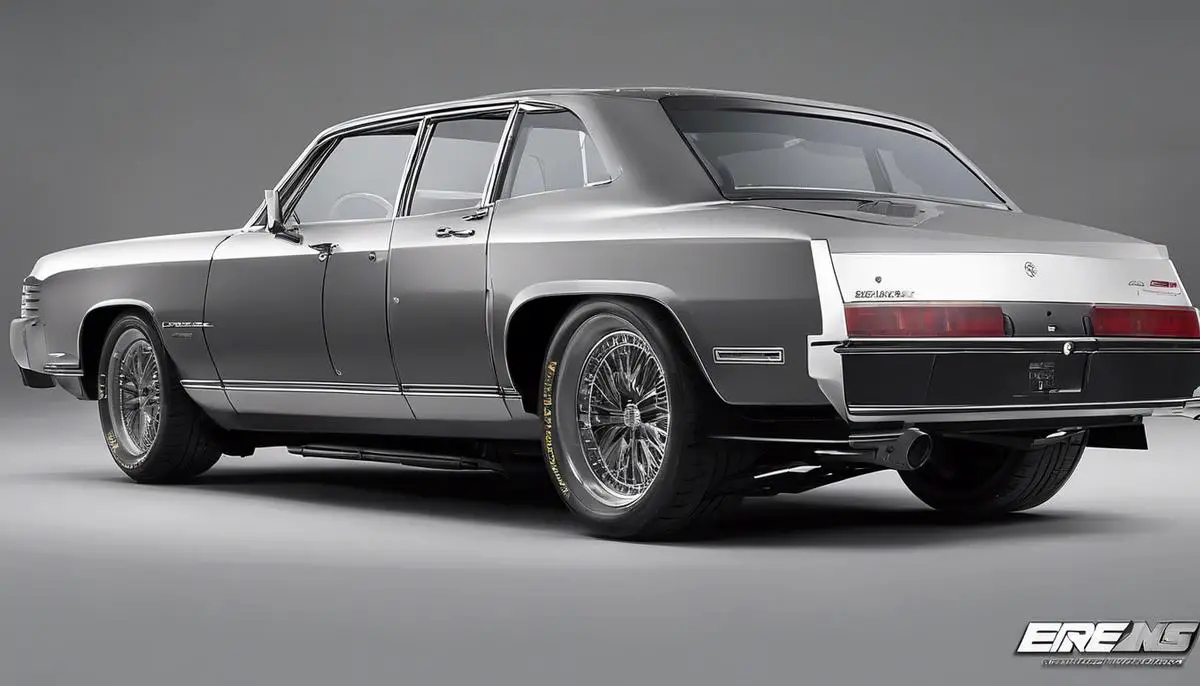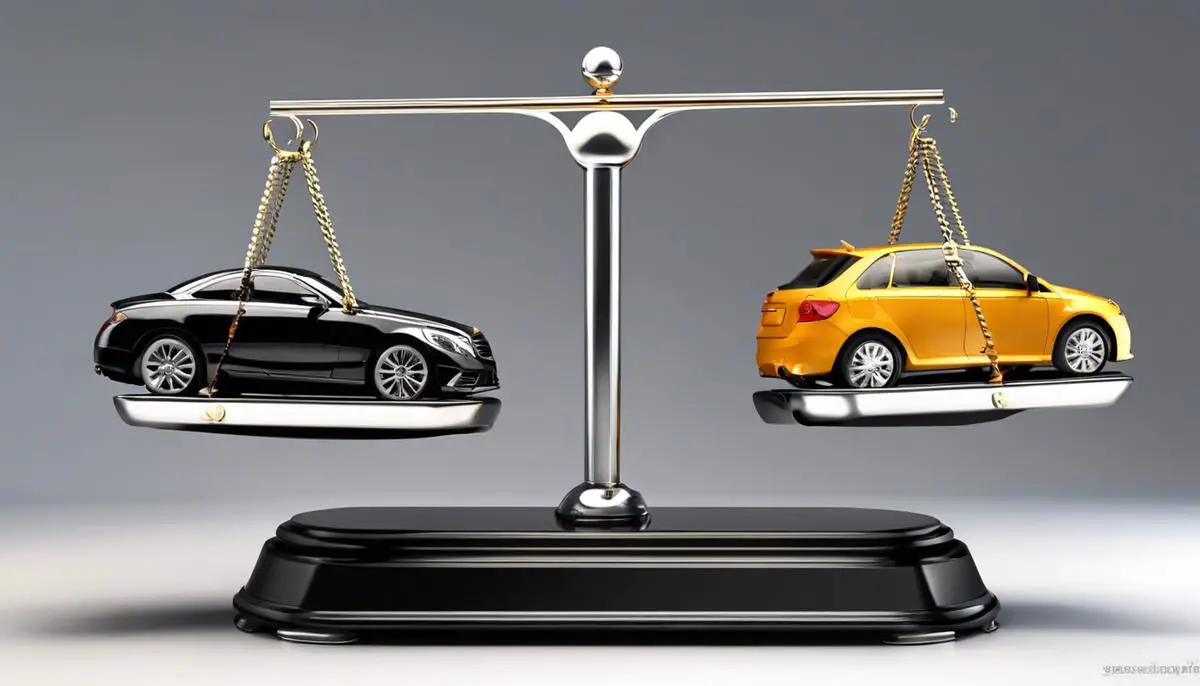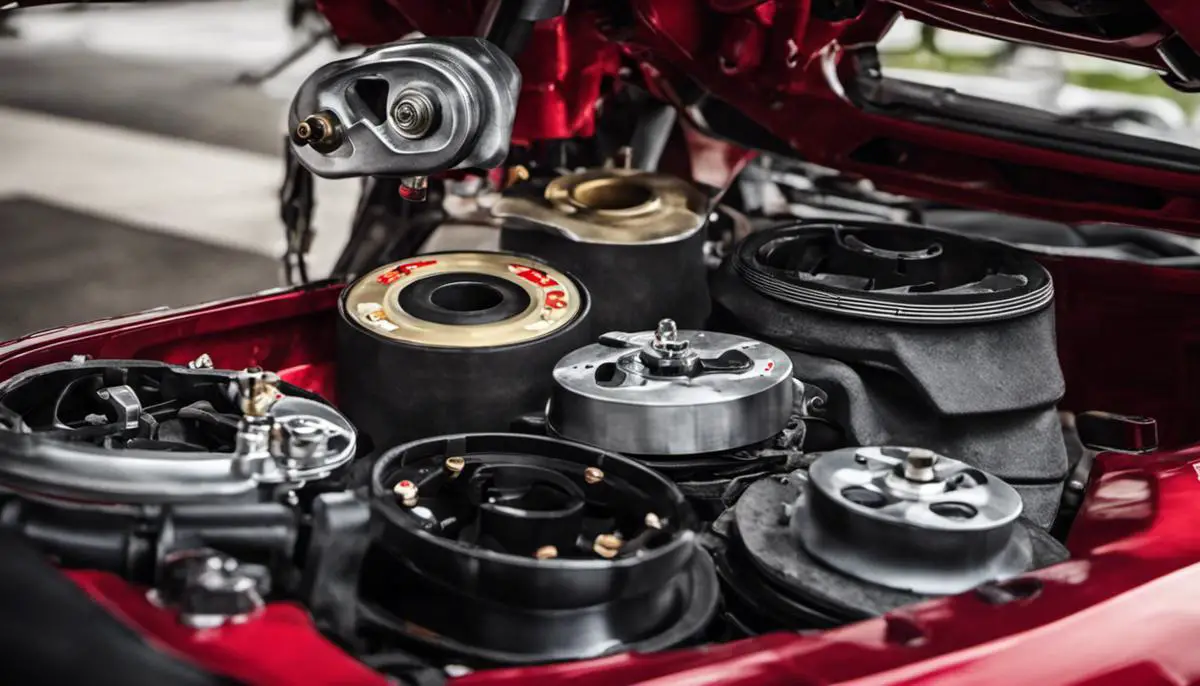When it comes to the exhilarating world of performance cars, every detail, no matter how small, is a critical component of the machine’s overall prowess on the road. Weight distribution is one such detail that might not command headlines like horsepower or torque, but its influence on a car’s handling and agility is undeniable. In exploring the intricate dance between steel, speed, and gravity, we’ll delve into the concept of weight distribution in performance vehicles, understanding the delicate balance that powers not just forward motion, but the very essence of dynamic driving. This exploration will illuminate why the numbers behind weight distribution ratios are far more than just figures in a spec sheet – they represent the heart of a vehicle’s interaction with the tarmac.
Contents
Understanding Weight Distribution
The Lowdown on Weight Distribution and Why it Matters for Your Ride
Have you ever wondered why some cars seem to handle like a dream while others feel more like a wild horse trying to buck you off on a twisty road? You might think it all comes down to the tires or maybe the engine, but there’s a hidden hero in this story: weight distribution.
Let’s break it down. Weight distribution is simply how the weight of a car is spread out over its four wheels. It’s not about how heavy the car is, but how that weight is shared front to back and side to side. The perfect balance? A 50/50 split, meaning half the car’s weight rests on the front wheels and the other half on the rear. But why does this even matter?
Imagine holding a tray with snacks. If you place the bowl of chips right in the middle of the tray, you can move around smoothly without sending chips flying. That’s like a car with balanced weight—it’ll handle turns and stops without fuss. Now, if those chips are all piled up on one side, things get messy quick. A car with uneven weight distribution has the same problem—it can’t handle turns and stops as smoothly, and no one wants to pick up chips, or in the case of cars, deal with fish-tailing or nose-diving!
So, how do you know if your car is balanced just right? Most of the time, the kind of car gives us clues. Sports cars, for example, are famous for aiming for that perfect 50/50 split for super sharp handling. SUVs and trucks? They might have more weight on the front where their powerful engines sit, making them a bit nose-heavy. But that’s not all bad, as it helps with traction when hauling heavy loads or pushing through rough terrain.
Some cars have tricks up their sleeves to help with weight distribution. They might mount the engine low or shift the batteries in electric cars to help keep the car steady and balanced. Ever heard of mid-engine cars? They’re designed with the engine behind the driver but in front of the rear axle to try to hit that 50/50 sweet spot.
For everyday drivers who aren’t in the market for a fancy sports car or aren’t worried about hitting the racetrack, weight distribution is still important. It means a smoother ride, less wear on parts, and even helps your car not get too thirsty on fuel. Plus, it’s safer. Balanced cars are less likely to lose control when you’ve got to stop fast or dodge a squirrel sprinting across the road.
If you’re taking a car for a test drive or just curious about your ride, look at where things are placed. Are the heavy items like the engine and transmission closer to the middle of the car? Are the seats and battery spaced out to even the score? These are good clues that someone thought about weight distribution when they put your car together.
In a nutshell, balanced weight in a car means a smoother, safer, and more fun driving experience. So, the next time you’re out on the open road, remember that it’s not just about what’s under the hood, it’s also about balance—one weighty subject that makes a big difference.

Effects on Driving Dynamics
Understanding the Power of Weight Distribution Tonality
Ever wondered why some cars feel glued to the road while others seem to skid and slide with every twist and turn? Look no further than weight distribution—a key player in your car’s performance on the road.
When weight is spread out evenly, a car becomes more stable. This stability isn’t just about staying level and straight; it’s about the power and control when the car zooms and zigs-zags. Imagine pushing a shopping cart with all the heavy cans on one side; it’s tough to steer, right? The same goes for cars. Balance those cans, or in a car’s case, distribute the weight properly, and steering becomes a breeze.
Sports cars have a low center of gravity and often have weight distributed near equally between the front and back wheels, giving them their zip and grip in those tight corners we all love. On the flip side, SUVs and trucks carry more weight up top and often more on the front or back, impacting how they handle, especially during quick moves or sudden stops.
But what happens when things get a bit lopsided? With too much weight on the front, a car can plow through corners like a bulldozer, without the grace or ease we want. And when there’s too much heft in the rear, the back wheels might just decide to take the lead, causing a fishtail effect.
For those behind the wheel every day, driving should feel comfortable, not like a battle against the car. Plus, keeping your ride balanced means saying goodbye to strange tire wear, shaking, and scrambled fuel figures. Who doesn’t want better gas mileage and a smoother journey?
Messing with the weight isn’t for beginners, and it’s not about shuffling a couple of bags in the trunk. Think about the big stuff, like where the engine sits or where that hefty spare tire lives. Moving these can seriously rejig your car’s composure on the road.
Wrap it up without needing a fancy bow: knowing the nuts and bolts of weight distribution can transform the drive from frustrating to fantastic. Keep the car balanced, and enjoy the ride; every corner can feel like a gentle glide rather than a wrestling match with the steering wheel. And that’s what makes the difference between an average car experience and a great one. Happy balancing!

Weight Distribution in Performance Cars
Enhancing Car Control with Weight Distribution Modifications
Delving into the world of performance tuning for cars can be as exciting as it is intricate. One key aspect that elevates a car from good to exceptional is its weight distribution. It’s like the secret ingredient in a recipe that makes a dish truly stand out. Here’s the nitty-gritty on tweaking weight distribution to enhance car control.
For starters, it is essential to understand the everyday impact of distribution changes. Modifications such as adjusting suspension components or adding ballast can shift the weight balance, affecting grip levels. A car with a perfect weight distribution sees improved tire longevity because each tire is taking on its fair share of the load. This leads to a more predictable and stable car, especially important when turning corners at high speeds or maneuvering around obstacles.
When considering performance cars, the stakes are even higher. These cars are designed to go fast and handle crisply. Balancing the car’s weight across all tires is vital. For example, adding a stiffer antiroll bar can prevent the car from leaning too much in a turn, keeping the tires flat on the road and distributing the weight evenly.
Thinking about customization? One popular modification is to strategically place heavier components within the car. This might include setting the battery in the trunk or opting for lightweight race seats to shift the weight rearward, balancing a front-heavy engine. Car enthusiasts might also tune their suspension to manage weight transfer. When a car accelerates or brakes, weight shifts to the rear or front, respectively. A well-tuned suspension manages this shift to maintain balanced tire contact with the road.
Considering the weight distribution can also stem from the type of cargo being carried. For long trips or carrying heavy loads, evenly distributing cargo can ensure the car remains stable. For performance drivers, however, it’s about distributing weight so that the car can brake later into a corner, accelerate out faster, and maintain higher speeds through turns.
Take a moment to glance at your car’s tire wear pattern. Uneven wear could indicate an imbalance in weight distribution. Rectifying these imbalances isn’t just about performance; it’s also about safety. A car with uneven weight distribution can suffer from unpredictable handling, making it more challenging to control in emergency situations.
Ultimately, fiddling with a car’s weight can significantly enhance the car’s capabilities and personalize the driving experience. The thrill of a perfectly balanced ride that responds eagerly to every command remains unmatched for car enthusiasts. Whether it’s for the thrill of the track day or just to enjoy a spirited drive down a winding road, getting weight distribution right is nothing less than a game-changer.
Remember, it’s not just about the speed – it’s about the dance between car and driver, each moving as one with the road. That’s the magic that proper weight distribution brings to the table.

Interpreting Weight Distribution Ratios
How to Decode Weight Distribution Specifications?
Alright, you’re deep into the fascinating world of cars and have clearly picked up on how crucial weight distribution is to the driving experience. You know that bringing the numbers into balance is like finding the sweet spot on a bat – it just feels right. It’s time to dive into what those weight distribution specs really mean when you’re browsing through car manuals or spec sheets.
Now, what do those percentages and figures tell you? Whenever you see a spec like 50/50 or 60/40, you are looking at the front-to-rear weight distribution ratio. A 50/50 distribution is what most drivers dream of – an even balance that helps a car corner like it’s on rails. If the numbers are leaning more toward the front, say 60/40, you’ve got more weight on the front wheels, common in most front-engine, front-wheel-drive cars. This setup can affect the grip of the rear tires during swift turns.
However, when reading these ratios, don’t just settle for the headline numbers. Peek at the curb weight too. This is the full weight of the car with standard equipment, but no passengers or cargo. You might say weight distribution is how this total weight is worn on the car’s tires, like how you’d wear a backpack – too low or too high, and you’ll feel it on a long hike.
Let’s also check out the axle load specification, which tells you how much weight each axle can bear. It helps to imagine your car is a seesaw. You’d want to balance out the playground equipment for a smooth up-and-down without any crashes to the ground, right? Axle load specs guide you on how to keep your car’s seesaw level, which can be particularly useful when packing for a trip or modifying your ride.
Getting these specs down is more than stuffy numbers. They are the blueprint to making a car handle like a dream or become a tough cookie in bad weather. And for adrenaline seekers in performance cars or those who like their rides looking cool but practical, understanding these numbers can guide adjustments like shifting the battery to the trunk or even where you mount that new subwoofer.
Remember, switching up the weight distribution is not just about achieving numerical harmony. It’s about gearing your car so it dances on the roads exactly how you like, whether that means tighter turns or a cushy drive that won’t spill your morning coffee. Each adjustment, from coilovers to where you stow your toolbox, can transform the way your car feels on the road.
Alright, that’s a wrap on decoding those weight distribution figures. Get out there and feel the difference balanced weight can make. Keep tweaking and stay safe on those turns!

The realm of performance driving is a symphony of engineering feats, where every factor plays a key role in the experience behind the wheel. Weight distribution is a fundamental principle that car enthusiasts and manufacturers alike scrutinize to unlock the full potential of a vehicle. As we’ve journeyed through the pivot points of car mechanics and dynamics, it’s clear that understanding weight distribution ratios is not merely about technical knowledge – it’s about grasping how a car will feel on the open road and how it will respond in those critical moments that call for precision and control. Armed with this insight, every curve in the road becomes a dialogue between driver and machine, a conversation that started long before the ignition was ever turned, in the minds of those who engineered harmony between mass and momentum.



